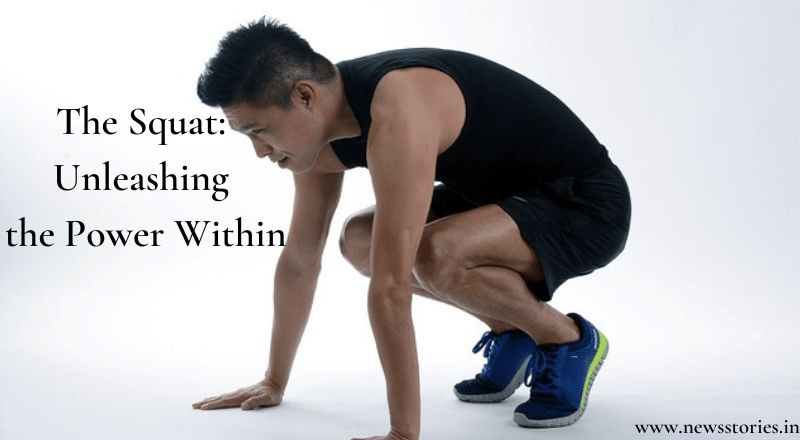The Squat: Unleashing the Power Within
Introduction
Are you ready to delve into the world of fitness and strength training. If so, one exercise that deserves your attention is the mighty squat. The squat is a compound movement that targets multiple muscle groups, making it a staple in any comprehensive training program.
In this article, we will explore the ins and outs of the squat, uncovering its benefits, proper form, variations, and frequently asked questions. So, put on your workout gear and let’s dive deep into the world of squats.
The Power of the Squat
Squat: The King of All Exercises
When it comes to building strength and muscle, few exercises can rival the squat. Known as the “king of all exercises,” the squat engages the lower body, including the quadriceps, hamstrings, glutes, and calves.
Additionally, it activates the core muscles, providing stability and balance during the movement. By incorporating squats into your routine, you can unlock the power within you and transform your physique.
Benefits of Squats
The benefits of incorporating squats into your fitness routine are immense. Here are just a few reasons why you should start squatting.
Increased Muscle Mass: Squats stimulate the release of anabolic hormones, such as testosterone and growth hormone. Leading to muscle growth and development.
Improved Strength: Squats engage multiple muscle groups simultaneously, enhancing overall strength and power.
Enhanced Athletic Performance: By targeting the lower body muscles, squats improve speed, agility, and explosiveness. Which are essential for various sports activities.
Burns Calories: Squats are a compound movement that requires significant energy expenditure. Making them an effective calorie-burning exercise.
Bone Density: Squatting places stress on the bones, stimulating bone remodeling and increasing bone density. Thus reducing the risk of osteoporosis.
Functional Movement: Squatting mimics everyday movements like sitting down and standing up. Improving overall functionality and mobility.
Proper Form: Mastering the Squat
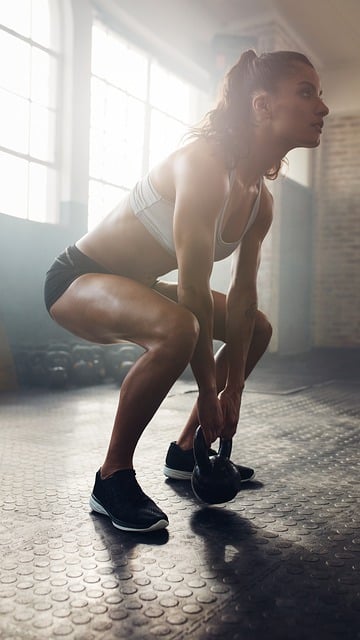
Before you start squatting, it’s crucial to learn the proper form to maximize results and minimize the risk of injury. Here’s a step-by-step guide to performing the squat with proper technique.
Starting Position: Stand with your feet shoulder-width apart, toes slightly pointed outward. Keep your head up, chest out, and maintain a neutral spine position.
Initiating the Movement: Begin by bending your knees and pushing your hips back, as if you are sitting back into an imaginary chair. Throughout the motion, keep your weight on your heels.
Depth: Descend until your thighs are parallel to the ground or slightly below. Ensure that your knees remain in line with your toes and do not cave inward.
Ascending: Push through your heels and drive your hips forward as you rise back up to the starting position. Keep your core working and stand up straight.
Breathing: Inhale as you descend and exhale as you ascend, focusing on maintaining a steady and controlled breathing pattern.
Remember, mastering the squat takes time and practice. Start with bodyweight squats, gradually progress to weighted squats, and always prioritize form over weight.
Squat Variations: Spice Up Your Routine
Goblet Squat
If you’re a beginner or looking for an alternative to the traditional squat, the goblet squat is an excellent choice.
With both hands, hold a dumbbell or kettlebell at chest height.
Assume a squat position, keeping your elbows inside your knees.
Descend into the squat, maintaining an upright posture and keeping the weight close to your body.
At the bottom of the squat, pause for a little while before driving through your heels to get back to the starting position.
The goblet squat provides a great opportunity to work on your squat form. While also engaging your core and upper body muscles.
Also Read : https://newsstories.in/shoulder-press-machine-revolutionize-your-shoulder-workout/
Bulgarian Split Squat
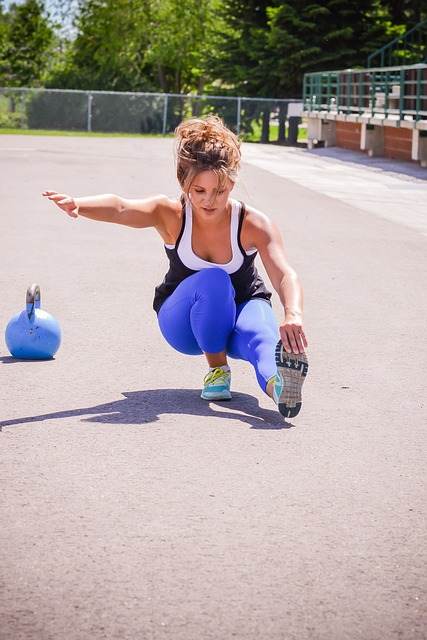
Looking to challenge your lower body further. The Bulgarian split squat is an excellent variation that targets your glutes, quads, and hamstrings. Here’s how to perform it:
Stand facing away from a bench or step, with one foot positioned on top of it and the other foot placed slightly forward.
Keeping your upper body upright, lower your back knee towards the ground, maintaining a 90-degree angle in both your front and back legs.
To get back to the beginning position, drive through your front heel.
Alternate between legs and feel the burn in your lower body as you work on balance and stability.
Sumo Squat
Want to shift the focus to your inner thighs and glutes. The best exercise is the sumo squat. Here’s how to perform it.
Stand with your feet wider than shoulder-width apart, toes pointed outward at an angle.
Keeping your back straight and core engaged, lower yourself into a squat position. Ensuring that your knees track in line with your toes.
Drive through your heels to get back to where you were.
The sumo squat targets different muscles than the traditional squat. Helping you develop a well-rounded lower body.
Frequently Asked Questions
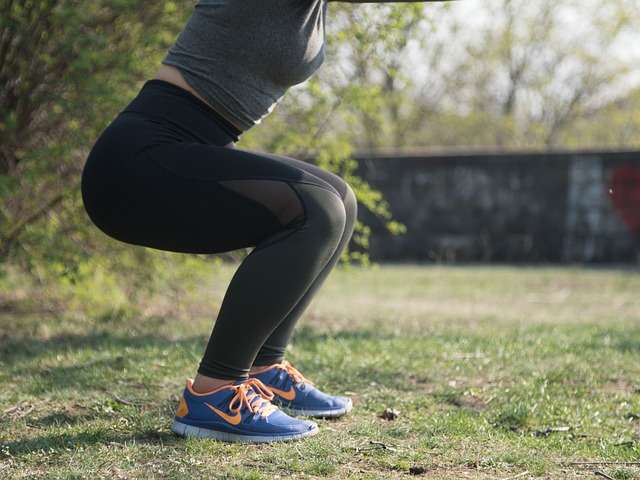
Q: Can squats help me lose belly fat?
A: While squats can contribute to overall fat loss by increasing calorie expenditure. They specifically target the muscles of the lower body rather than spot-reducing fat in the belly area. To lose belly fat, a combination of a healthy diet, cardio exercise, and strength training is recommended.
Q: Should I squat with weights or just use my body weight?
A: Both weighted squats and bodyweight squats have their benefits. Beginners can start with bodyweight squats to work on form and build foundational strength. As you progress, adding weights can help increase resistance and stimulate muscle growth.
Q: Are squats bad for my knees?
A: When performed with proper form and technique, squats are not bad for your knees. In fact, they can strengthen the muscles around the knees, providing stability and support. However, if you have pre-existing knee conditions or injuries. It’s essential to consult with a healthcare professional before incorporating squats into your routine.
Q: How often should I squat?
A: The frequency of squatting depends on your fitness goals and overall training program. Generally, two to three times a week is recommended for most individuals. However, it’s important to allow for adequate rest and recovery between squat sessions to prevent overtraining.
Q: Can I do squats if I have lower back pain?
A: If you have lower back pain, it’s crucial to identify the underlying cause before deciding whether squats are appropriate. In some cases, squats can help strengthen the muscles supporting the spine and alleviate pain. However, if squats exacerbate your lower back pain. It’s best to consult with a healthcare professional.
Q: Can I replace squats with leg press machines?
A: Leg press machines can be a suitable alternative for squats, especially if you have mobility limitations. Or injuries that prevent you from performing squats. However, squats offer the additional benefit of engaging core muscles and promoting. Functional movements that translate into daily activities. If possible, incorporating a combination of both exercises into your routine can provide a well-rounded lower body workout.
Conclusion: Embrace the Squat for Strength and Fitness
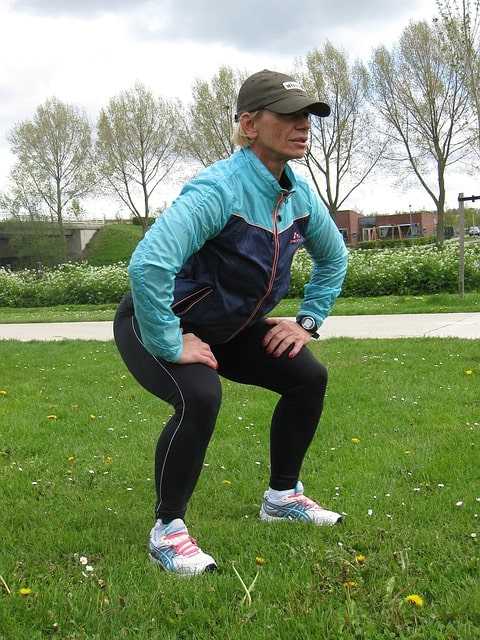
In conclusion, the squat is a powerhouse exercise that deserves a place in every fitness enthusiast’s repertoire. With its ability to target multiple muscle groups, increase strength and power.
And promote functional movement, the squat is unmatched in its effectiveness. Remember to focus on proper form, gradually progress in weights and variations, and listen to your body to avoid injury.
So, whether you’re a seasoned lifter or just starting your fitness journey, don’t underestimate the power of the squat. Embrace this exercise and unleash the strength within you. Get ready to squat, grow, and conquer your fitness goals.
<< Previous Post
>> Next Post

